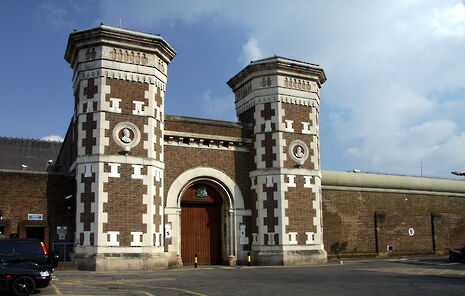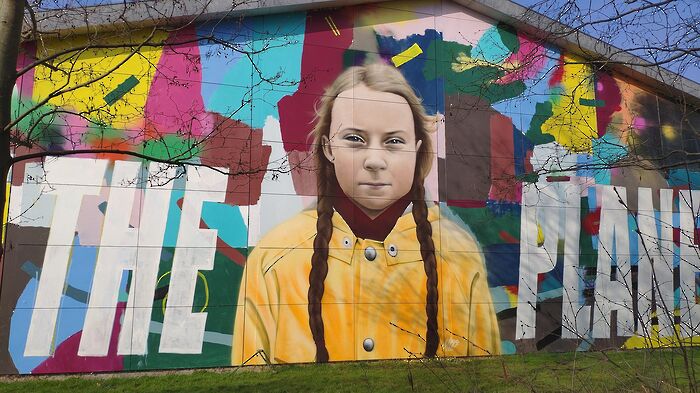Prison should be a place of rehabilitation, not reprimand
Olivia Millard discusses the benefits of pursuing rehabilitory reforms in correctional facilities, and the need for compassion in order to support a functioning, inclusive society

Seventy percent of prisoners re-offend. This is, of course, for a multitude of reasons, but suggests that the prison system is not achieving what it was designed to do: prevent crime. During a prison sentence, parole seems like light at the end of a long, dark tunnel. But the reality is that it doesn’t get much lighter. People are being given sleeping bags upon their release from jail, so low are the chances that they will secure housing and employment. In 2010, only 12% of employers surveyed said that they had recently employed somebody with a criminal record.
This pattern is blindingly obvious on a worldwide scale. In 2018, 41% of American prisoners did not hold a high school diploma. These statistics show an undeniable link between the education system and prisoner population, suggesting that the necessary reforms in the prison system would mean uprooting a significant sector of society, which would of course take time.
An important step towards understanding the current system is to acknowledge that prisons today are nothing like the media present them
By mainly focusing on punishment, the British penal system is only addressing the ‘effect’ element of a ‘cause and effect’ problem, and there begins the vicious cycle that is caused by reoffending. Prison is actively counterproductive for certain crimes, particularly those drug-related, and as prisoners’ mental and physical health is suffering because of funding cuts, with 83 self-inflicted deaths in 2018, it’s time to use the limited money available on rehabilitation and resettlement programmes.
Prior to governmental funding cuts, steps have been made towards improving the education opportunities prisons offer. In 2016, the RAND Corporation in America released a report showing that the pursual of educational programmes in jail reduced the likelihood of returning to prison by 43%. However, due to funding cuts, the number of people who have achieved A Level grades whilst in prison is now 10% of what it was 10 years ago.
Last year, as part of the Learning Together initiative, I, alongside a dozen first-year French students, visited HMP Whitemoor, a high-security male prison, to discuss French literature with a group of inmates. Founded by Drs Ruth Armstrong and Amy Ludlow, Learning Together is prison-based education in the sense of bringing students from outside and within prison together to learn together. Its motto is “Education as the practice of freedom,” and even if physical freedom isn’t on the cards, what is offered in terms of mental emancipation is invaluable.
The course was inspiring in ways that we’d never considered beforehand, with our course boosting not only the prisoners’ self-confidence, but also our own, which will hopefully open gateways to further education and creativity for both groups. HMP Whitemoor is a prison which focuses on settlement (helping the convicted make positive use of their sentences) and resettlement (reducing the risk of reoffending), but many of these opportunities are not offered at other prisons.
If it is not benefiting those it is designed to help, surely it is time to change
Despite the circumstantial differences between the two groups, which became most obvious to me when one Whitemoor student mentioned “I’ve never seen an iPhone before,” there was a sense of community was far more overpowering. One inmate referred to the “wider community outside prison” he now feels he belongs to, and talked of the hope “for a future where we will one day re-join the community.” A community represents a support network, vital to thriving on the outside. It is all too easy for inmates to become “institutionalized” during extended sentences which can only be detrimental to their return to society.
Speaking to many people about the course, words like “naïve” and “innocent” frequently come up, as I repeat how welcoming and open the atmosphere was inside, as people initially doubt how discussing medieval French verse with prisoners is beneficial. In my opinion, it is more naive to consider the concepts of crime and punishment in black and white: the latter does not necessarily prevent the recurrence of the former. Furthermore, it is important to question the dichotomy between perpetrator and victim: all too often those who have committed crimes are in fact victims themselves of poverty, abuse or addiction. Whilst I acknowledge that a lot of crimes meriting extended sentences do indeed deserve punishment, I maintain that prison is not the correct form of ‘punishment’ for many other crimes.
Horace Mann, an American educational reformer, once called education “the great equalizer,” but surely this concept only works if the most vulnerable members of society have access to it. Illiteracy is a serious barrier to re-entry into society. 50% of prisoners have the literacy age of an 11 year old. Limited phone credit and rare visits mean a lot of letter-writing to stay in contact, but not being able to read these letters means a stronger sense of isolation than ever. On a practical level, not being able to fill out menus or read notices detailing what happens on what day in prison hugely exacerbates the day-to-day trials of living in prison, and can also contribute significantly to mental health issues, like depression.
An important step towards understanding the current system is to acknowledge that prisons today are nothing like the media present them. With the combination of education and a more open societal mindset towards prison and resettlement within society, I believe that rates of re-offence would decrease enormously. Whitemoor is no Shawshank, and there is a definite gap between the way in which the media presents prisons and how prisoners experience them. Britain has the highest incarceration rate in Western Europe, and if it is not benefiting those it is designed to help, surely it is time to change.
 News / Uni Scout and Guide Club affirms trans inclusion 12 December 2025
News / Uni Scout and Guide Club affirms trans inclusion 12 December 2025 News / Cambridge study finds students learn better with notes than AI13 December 2025
News / Cambridge study finds students learn better with notes than AI13 December 2025 News / Cambridge Vet School gets lifeline year to stay accredited28 November 2025
News / Cambridge Vet School gets lifeline year to stay accredited28 November 2025 Science / Did your ex trip on King’s Parade? The science behind the ‘ick’12 December 2025
Science / Did your ex trip on King’s Parade? The science behind the ‘ick’12 December 2025 News / Pembroke to convert listed office building into accom9 December 2025
News / Pembroke to convert listed office building into accom9 December 2025









